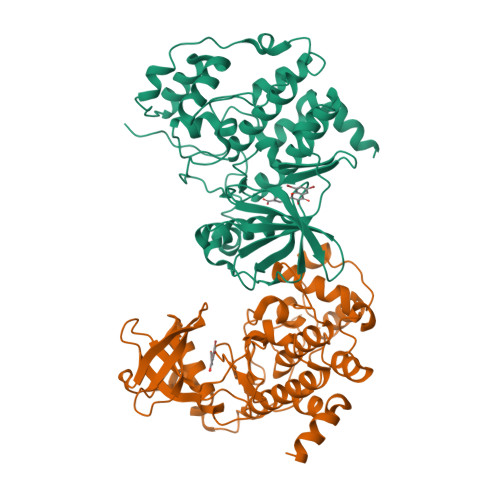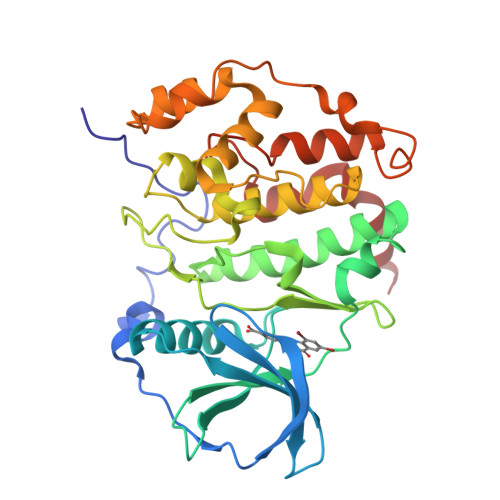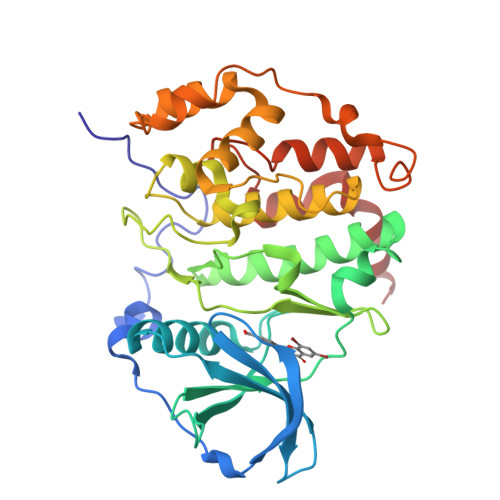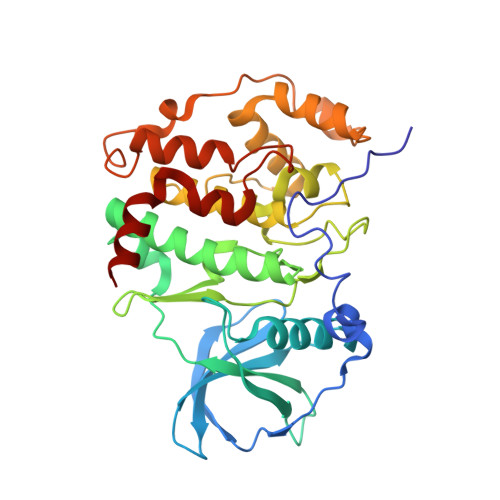A Note of Caution on the Role of Halogen Bonds for Protein Kinase/Inhibitor Recognition Suggested by High- And Low-Salt CK2 alpha Complex Structures.
Guerra, B., Bischoff, N., Bdzhola, V.G., Yarmoluk, S.M., Issinger, O.G., Golub, A.G., Niefind, K.(2015) ACS Chem Biol 10: 1654-1660
- PubMed: 25961323
- DOI: https://doi.org/10.1021/acschembio.5b00235
- Primary Citation of Related Structures:
4UB7, 4UBA - PubMed Abstract:
CK2 is a Ser/Thr kinase recruited by tumor cells to avoid cell death. 4'-Carboxy-6,8-dibromo-flavonol (FLC26) is a nanomolar CK2 inhibitor reducing the physiological phosphorylation of CK2 biomarkers and inducing cell death. Its binding mode to the ATP site was predicted to depend primarily on noncovalent interactions not comprising halogen bonds. We confirm this by two independent cocrystal structures which additionally show that FLC26 is selective for an open, protein kinase-untypical conformation of the hinge/helix αD region. The structures suggest how the bromo substituents, found previously in lead optimization studies, contribute to the inhibitory efficacy. In this context, one of the complex structures, obtained by crystallization with the kosmotropic salt NaCl, revealed an unconventional π-halogen bond between the 8-bromo substituent of FLC26 and an aromatic side chain which is absent under low-salt conditions. The kosmotropic salt sensitivity of π-halogen bonds is a novel feature which requires attention in structural comparisons and halogen-bond-based explanations.
Organizational Affiliation:
†University of Southern Denmark, Department of Biochemistry and Molecular Biology, Campusvej 55, DK-5230 Odense, Denmark.


















